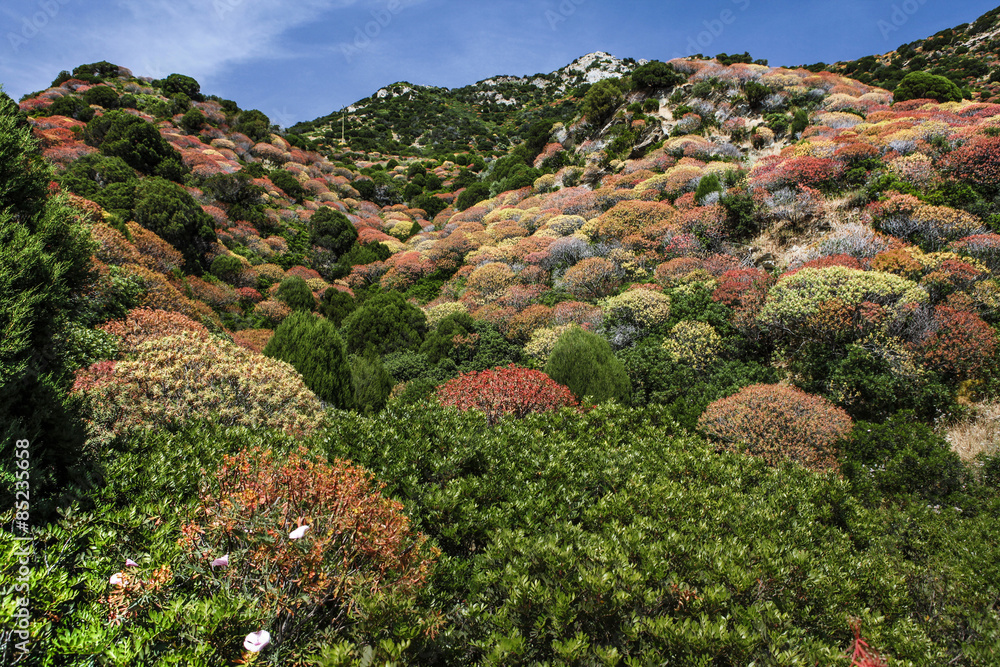GIANCARLO NONNOI, FORMER PROFESSOR OF THE HISTORY OF MODERN PHILOSOPHY AND OF THE HISTORY OF SCIENCE AT THE UNIVERSITY OF CAGLIARI, HAS PUBLISHED THE BOOK WITH THE TITLE “FLORA SARDOA (1747-1788. INTRODUCTORY ESSAY, TRANSCRIPTION OF THE AUTOGRAPH MANUSCRIPT AND NOTES BY GIANCARLO NINNOI”. THE WORK IS A FAITHFUL REVISITATION OF THE SARDINIAN FLORA BY THE FAMOUS PIEDMONT SURGEON-NATURALIST MICHELE ANTONIO PLAZZA, A BOTANICAL TEXT OF THE SECOND EIGHTEENTH CENTURY, SURPRISINGLY TIMELY AND UNIVERSAL, WHICH HAS HAD A PIONEERING IMPORTANCE IN THE CONTEXT OF SYSTEMATIC BOTANY.
Flora Sardoa: a pioneering botanical excursus
In a period in which we continuously talk about the climate crisis, environmental disasters and the challenges to our survival, the plant world, perhaps the least listened to victim, but equally worthy of compassion, finds itself facing the most serious consequences of an irreversible change .
It is therefore useful to focus for a moment on the relevance of plant kingdom.
Where to start? From reading the full transcript of the “Flora Sardoa”for example, a treatise from the eighteenth century (which remained unpublished until the twentieth century), always current and universal, re-proposed by Giancarlo Nonnoi. The work offers us a unique opportunity to explore the depth of this pioneering research.
The original text, edited by Michele Antonio Plazza (1720-1791) according to the taxonomy and method created by the Swedish doctor and naturalist Carl Linnaeus (1707-1778), classified 818 species of plants present in the lush vegetation of the Sardinia.
With its endemic species, around 340 out of a total of 2410 entities, 15% of the total, the island is home to an extraordinarily varied flora.
But the rereading of the text, in addition to representing a unicum among Italian floristic studies of the second half of the eighteenth century, a “love declaration” to the Sardinian flora, also offers us a path of introspection.
It invites us to reflect on the richness of nature, now in danger, and to consider its importance in our modern world, especially in an era in which environmental protection must become an absolute priority.
This was perhaps one of Plazza’s intentions, “prophet” visionary of a tormented future?
Good question. What is certain is that it is incredible to note how much his work, with the meticulous description of Sardinian plants, is intertwined with the present, recalling a connection between man and nature that has undergone a dramatic rupture.
A message that starts from Sardinia, but which embraces every corner of the planet, without limits of space and time.
What is happening today in Sardinia?
In recent times, Sardinia has become the stage of an environmental tragedy.
The havoc was caused by the summer fires which in recent decades have devastated the fauna and flora. An age-old question for the island, which in the past had issued a series of decrees aimed at avoiding the phenomenon.
A jump in the past “incendiary” of Sardinia
In the splendid isolafires have been one of the main causes of the decrease in forestry heritage.
Shepherds, accustomed to using it to clean pastures or improve vegetation, and farmers, with “stubble cutting”(harvest residues), unknowingly contributed to this environmental scourge.
Since the judicial era (the Sardinian Giudicati were independent state entities that had power in Sardinia between the 9th and 15th centuries), the island’s government considered fires a crime.
The Logo card, dedicated five chapters to the legislation. Severe penalties were foreseen for arson, such as the death penalty for those who set fire to houses and the cutting off of the right hand for those who set fire to cultivated land. In short, prevention was a fundamental aspect.
The legislation prohibited stubble burning before 8 September and required the opening of firebreaks by 29 June to defend the villages.
Collective responsibility for fire damage was a principle borrowed from the Spanish and remained in force until Felician Code from 1828.
Environment: a protected heritage
The fire issue was constantly monitored by the institutions.
To attest to this, the Parliament of the Duke of GandiaDon Carlo Borgia, count of Oliva (1612-1614) and the laws of Philip III of Spain.
The goal was to protect vital resources such as olive trees, which are essential to the island’s economy.
With the Royal Charter of 1756, bans on the use of fire to eliminate vegetation were then introduced, and in 1771, it was forbidden to light fires under plants. The pragmatic norms from 1806 of the re Victor Emmanuel I introduced new restrictions, including a ban on burning land before September 8 and the loss of acreage in case of violation.
The Code of Carlo Felice of 1828 established severe penalties, including the death penalty, for those who maliciously set fire to buildings or plants. This period marked a greater awareness of the importance of preserving forest resources.
The fires were not just the result of cultural practices.
They also reflected social tensions caused by legislative changes or upheavals in the ownership structure.
The universal message of Flora Sardoa
The fires, together with other natural disasters, are causing havoc and destruction. Nature must be protected.
Even an interesting read can trigger awareness in people.
Let’s start with Flora Sardoato discover the phytogeographical and systematic heritage of the Region.
We begin to appreciate plants, the only living things at that universe which produce neither noise nor waste.
To paraphrase the astronaut Neil Armstrong “This is one small step for man, but one giant leap for humanity.”
Source
SardiniaForests

